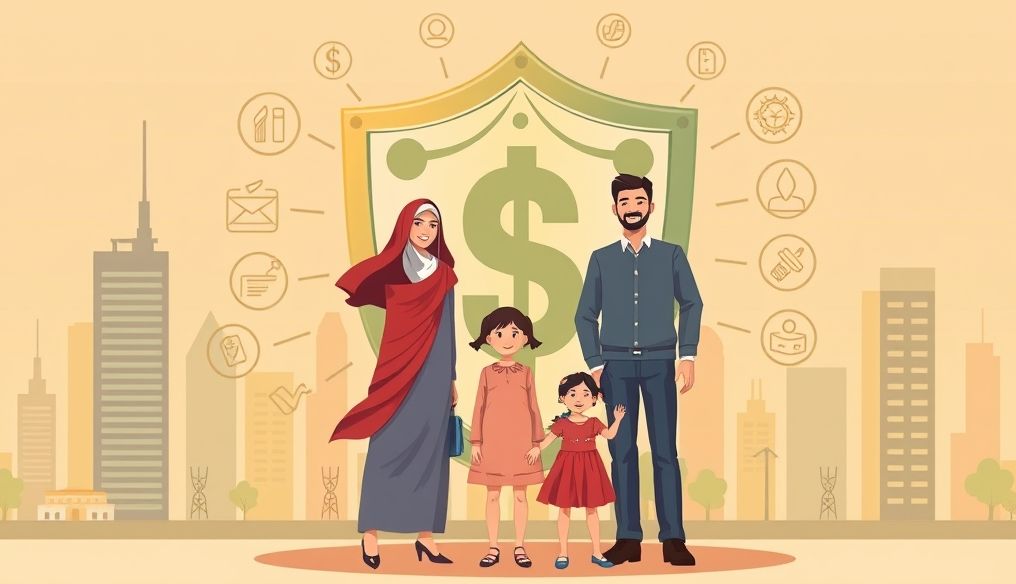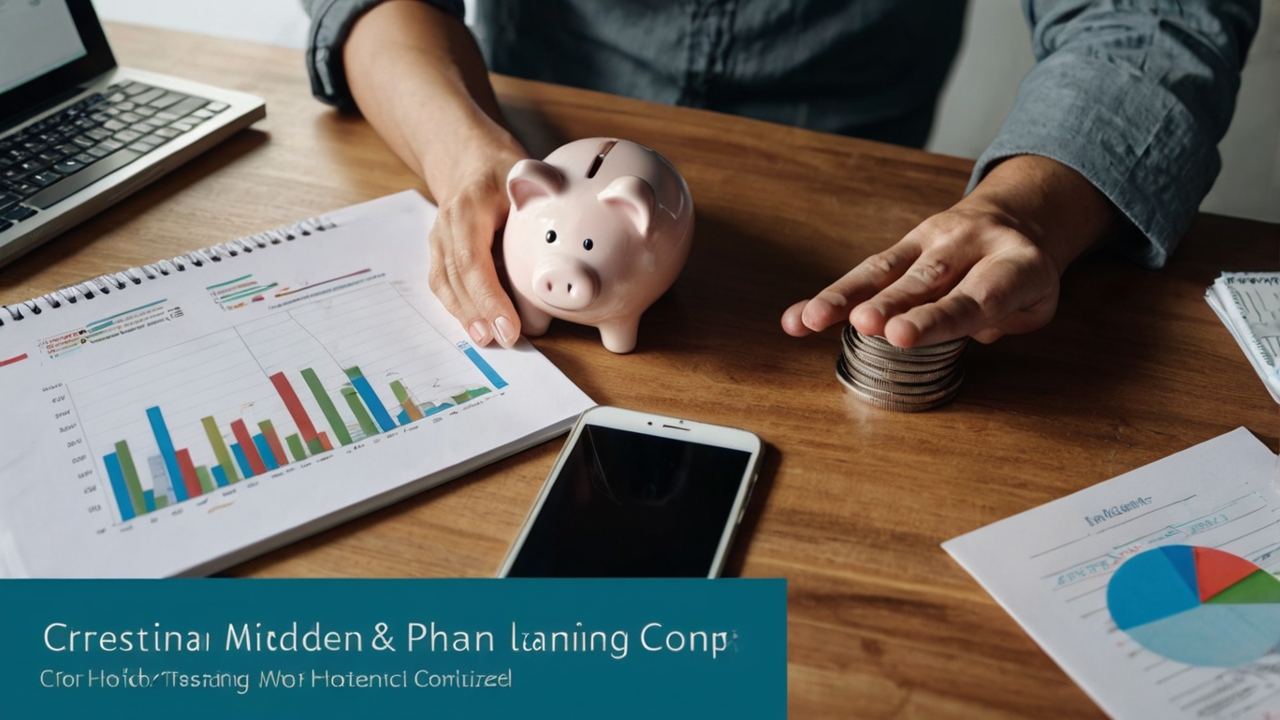Emergency Fund: The Financial Safety Net for Arab Families in the Face of Life's Uncertainties
In our modern world, economic life is characterized by dynamism and sudden fluctuations. From job loss to unexpected medical expenses, financial challenges can arise at any time. This is where the emergency fund comes into play as a financial safety net for the Arab family, providing them with a safety net that protects them from the effects of economic shocks.
Chapter 1: What is an Emergency Fund and Why is it Necessary?
An emergency fund is a sum of money set aside to cover unexpected expenses that may arise at any time. This fund is necessary for the following reasons:
- Protection from Debt: Prevents resorting to borrowing at high interest rates in emergencies.
- Relief from Stress and Anxiety: Provides peace of mind and psychological security in the face of difficult circumstances.
- Maintaining Financial Stability: Prevents the deterioration of the family's overall financial situation due to unplanned expenses.
- Taking Advantage of Opportunities: May provide liquid cash to take advantage of unexpected investment opportunities.
Chapter 2: Determining the Appropriate Size of the Emergency Fund: The Financial Safety Equation
There is no "ideal" size for an emergency fund that suits everyone. The appropriate size depends on several factors specific to each family. However, a general rule indicates the need to provide enough to cover basic living expenses for at least 3 to 6 months.
Factors Affecting the Size of the Fund:
- Monthly Income: The higher the income, the greater the ability to save and thus increase the size of the fund.
- Monthly Expenses: Expenses must be analyzed carefully to determine the amount needed to cover basic needs.
- Job Stability: If the job is unstable, it is preferable to increase the size of the fund to cover a longer period.
- Health Insurance: If health insurance is comprehensive, the size of the fund may be slightly reduced.
- Number of Family Members: The more individuals, the higher the expenses and therefore the size of the fund.
- Debts: The existence of large debts necessitates increasing the size of the fund to cover debt installments in case of emergency.
Practical Example: If the expenses of an Arab family in Riyadh are 15,000 Saudi Riyals per month, their emergency fund should be between 45,000 (3 months) and 90,000 (6 months) Saudi Riyals.
Chapter 3: Calculating Basic Expenses: A Detailed Budget Analysis
To accurately determine the size of the emergency fund, monthly expenses must be analyzed carefully and the "basic" expenses that cannot be dispensed with must be identified. These expenses include:
- Rent or mortgage payments.
- Basic food supplies.
- Utility bills (electricity, water, gas, internet).
- Transportation (fuel, public transport).
- Basic healthcare.
- Insurance premiums.
- Children's school expenses.
Tip: Use a budget management app or spreadsheet to track expenses accurately and identify basic expenses.
Chapter 4: Where to Keep the Emergency Fund? Liquidity and Security are Key
The emergency fund must be easily accessible at any time, while maintaining its value. Therefore, a safe and easily accessible place must be chosen to keep it. Suitable options include:
- High-Yield Savings Account: Provides a simple return with easy access to funds.
- Separate Checking Account: Dedicated only to the emergency fund to avoid using it for daily expenses.
- Low-Risk Short-Term Investment Fund: Such as money market funds, which offer a higher return than savings accounts with low risk.
Warning: Avoid investing the emergency fund in high-risk assets such as stocks or real estate, as you may need the money at a time when the value of these assets is low.
Chapter 5: Building the Emergency Fund: Practical Steps for Saving
Building an emergency fund requires planning and commitment. Here are some practical steps to get started:
- Set a Realistic Goal: Start by determining the amount you want to save for the emergency fund.
- Create a Monthly Budget: Identify sources of income and expenses, and look for ways to reduce unnecessary expenses.
- Allocate a Fixed Amount for Saving: Make saving an essential part of your monthly budget.
- Automate Saving: Automatically transfer a fixed amount from your checking account to your emergency fund savings account each month.
- Use Unexpected Bonuses: Put any bonuses or salary increases into the emergency fund.
- Be Patient and Persistent: Building an emergency fund takes time, but commitment will pay off.
Chapter 6: Replenishing the Fund: Maintaining the Level of Security
After using the emergency fund, it is important to replenish it as soon as possible to maintain the level of financial security. Temporarily increase the monthly savings amount until the withdrawn amount is restored.
Chapter 7: Emergency Fund and Investment: Balancing Security and Growth
After reaching the target emergency fund size, you can start thinking about investing to achieve financial growth. However, the emergency fund should always be a top priority.
Tip: After building the emergency fund, you can allocate a portion of your income to investment, while continuing to add small amounts to the emergency fund periodically to maintain its level.
Chapter 8: Common Mistakes in Managing the Emergency Fund and How to Avoid Them
There are some common mistakes people make in managing the emergency fund. Avoid these mistakes to ensure the effectiveness of the fund:
- Not Having an Emergency Fund at All: This is the biggest mistake, and leaves you vulnerable to financial shocks.
- Using the Emergency Fund for Unnecessary Expenses: The fund should only be used for genuine emergencies.
- Keeping the Emergency Fund in a Hard-to-Reach Place: The fund should be easily accessible at any time.
- Investing the Emergency Fund in High-Risk Assets: You may lose part of the fund's value when you need it.
- Not Replenishing the Fund After Using It: This leaves you vulnerable in the event of another emergency.
Chapter 9: Emergency Fund in Arab Culture: Values of Solidarity and Mutual Support
In Arab culture, the values of solidarity and mutual support play an important role in facing crises. The emergency fund can complement these values, providing a personal and family means of promoting financial independence and the ability to help others in times of need.
Chapter 10: Emergency Fund: An Investment in the Future
The emergency fund is not just a sum of money dedicated to emergencies, but an investment in the future. It provides financial security and peace of mind, and allows you to focus on achieving your goals and aspirations without worrying about unexpected financial challenges. Start building your emergency fund today, and invest in your future and the future of your family.
Disclaimer: This article is for educational and informational purposes only, and does not constitute financial advice. You should consult a qualified financial advisor before making any financial decisions.




